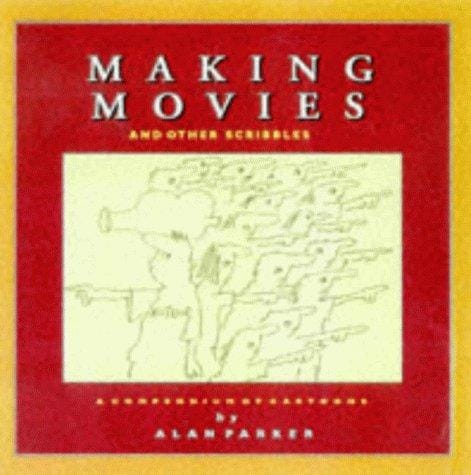Making Movies: From Idea to Premiere
Comprehensive 800-word guide detailing every stage of making movies, from pre-production and casting to post-production and marketing.

Introduction: The Art and Science of Making Movies
Making movies blends storytelling, technology, and collaborative creativity into a single exhilarating process. From the first spark of an idea to the glow of a projector on premiere night, each step demands careful planning and inspired execution. In today’s digital landscape, filmmaking tools are more accessible than ever, yet the craft remains as demanding as it is rewarding. Understanding the full filmmaking process helps new directors, producers, and screenwriters avoid common pitfalls and focus their energy where it matters. This guide explores every stage of film production so you can transform a concept into a compelling cinematic experience.
Pre-Production: Laying the Groundwork for Success
Pre-production is where a movie truly begins. This stage includes refining the concept, creating a workable budget, arranging financing, and assembling the core crew. A detailed production schedule, often managed with professional software, keeps deadlines realistic and stakeholders aligned. Storyboarding translates script pages into visual frames, helping the director communicate their vision to the cinematographer and art department. By addressing logistical challenges early—such as insurance, permits, and union rules—you save time and money once cameras roll.
Writing a Screenplay That Demands Attention
No amount of cutting-edge equipment can rescue a weak script, so investing time in screenwriting is crucial. Strong screenplays feature clear structure, memorable characters, and authentic dialogue. Most writers begin with a three-act outline or the Save the Cat beat sheet to map story moments and maintain pacing. Professional screenwriting software formats pages to industry standards, speeding revisions and ensuring smooth reads by potential investors. Table reads with actors can expose weak spots, tighten dialogue, and spark new ideas that enrich the narrative.
Casting: Finding Faces That Bring Characters to Life
Casting calls, whether held in person or through online casting platforms, shape a film’s emotional core. Beyond acting talent, directors look for on-screen chemistry and scheduling compatibility. Detailed character breakdowns help agents submit appropriate performers, cutting down audition time. During callbacks, scene work and improvisations reveal how actors interpret the material and collaborate under pressure. Securing the right cast not only boosts artistic quality but can also improve funding prospects if recognizable names are attached.
Location Scouting: Creating a Visual Identity
Authentic locations anchor a film’s tone and save on set-building costs. Scouts search for places that match the script’s mood, have controllable lighting, and accommodate equipment. Factors like sound pollution, local regulations, and power accessibility can make—or break—an otherwise perfect spot. Virtual location scouting with 360° cameras speeds decision-making and allows remote approvals. Always secure location releases and community goodwill; a supportive neighborhood can drastically reduce logistical headaches during principal photography.
Cinematography: Painting With Light and Lens
Cinematography transforms raw action into visually engaging images. The director of photography (DP) selects camera bodies, lenses, and lighting setups that fit budget and artistic goals. Shot lists and lighting diagrams keep every crew member on the same page, reducing downtime between setups. Today’s filmmakers often shoot in RAW or log formats for greater flexibility in color grading. Whether chasing a handheld, documentary feel or employing cinematic dolly moves, maintaining a consistent visual language keeps audiences immersed from first frame to last.
Sound Design and Music: The Invisible Layer of Emotion
Audiences forgive an occasional soft focus, but they rarely tolerate poor audio. Clean production sound starts with high-quality microphones, skilled boom operators, and well-placed lavaliers. Foley artists later recreate everyday noises—footsteps, cloth rustles, and door creaks—to add realism. Meanwhile, composers craft musical themes that heighten tension and underscore emotion. Licensing existing tracks requires careful rights negotiation, but royalty-free libraries can fill gaps on tight budgets. Thoughtful sound design turns a collection of images into a fully immersive world.
Post-Production: Shaping the Final Narrative
In the edit suite, story, picture, and sound converge. Editors assemble rough cuts, fine cuts, and locked cuts, guided by pacing, rhythm, and performance nuance. Colorists balance exposure and craft distinctive looks, while visual-effects artists add CGI or remove unwanted elements. ADR replaces noisy or unclear dialogue, and final mix engineers blend dialogue, music, and effects into a polished soundtrack. A rigorous quality-control pass ensures the film meets technical standards for theaters, streaming services, and international markets.
Marketing and Distribution: Delivering Your Film to an Audience
Even masterfully crafted movies need strategic marketing to find viewers. Early teaser posters and social-media campaigns build anticipation during production. Submitting to film festivals can attract press coverage, reviews, and distribution offers. Independent filmmakers often negotiate limited theatrical releases or leverage video-on-demand platforms to reach global audiences. Creating behind-the-scenes content, director interviews, and searchable blog posts strengthens search-engine optimization and broadens organic reach. Data analytics then measure campaign success and guide future projects.
Conclusion: Turning Vision Into Reality
Making movies is a marathon of creative decisions and logistical challenges, yet the thrill of watching your story on screen makes every hurdle worthwhile. By mastering each stage—from pre-production planning and screenplay refinement to post-production polish and targeted marketing—you boost your film’s chances of critical and commercial success. Continuous learning, networking, and embracing new technology keep you competitive in a fast-evolving industry. Ultimately, filmmaking remains a collaborative craft, and building a passionate team is the surest path to bringing your cinematic vision to life.